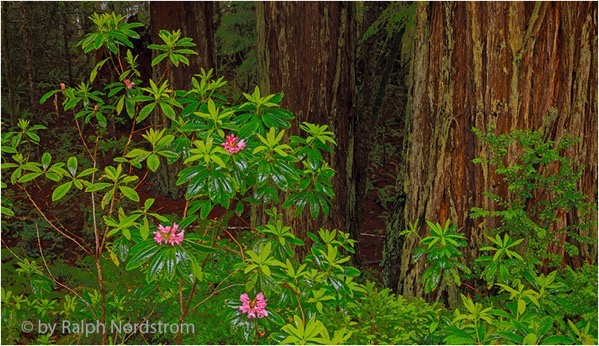
It’s often said that California has everything. And it’s true. From the southern border with Mexico to the northern border with Oregon, the state goes from parched desert to lush mountain slopes.
California also has the oldest living trees in the bristlecone pines of the White Mountains, the most massive trees in the Giant Sequoias of Sequoia and Kings Canyon National Parks, and the tallest trees in the Coastal Redwoods along the California coast.
Can you imagine what it is like to experience these trees? Just think of it. The oldest bristlecones were seedlings when the pharos of Egypt were laying massive stone upon stone in Giza. And both the giant sequoias and coastal redwoods were seedlings when Christ was born in Bethlehem.
The coastal redwoods are the monarchs of these mountains, especially the unlogged old-growth groves….
The most abundant of these trees is the coastal redwood. Extending over 450 miles of coastline, they are clustered in scattered groves throughout the coastal mountains, some in narrow mountain canyons, others in spacious mountain valleys or river flood plains and still others on steep mountain slopes. Some old growth groves are littered with the accumulation of centuries of growth, death and decay while others are like walking in a majestic park. Each seems to have its own special quality and character. But all share the lush green that is nourished by the ever-present caressing fog that defines this unique environment.
The coastal redwoods are the monarchs of these mountains, especially the unlogged old-growth groves, but there is much more to explore and marvel at. The Smith River is the longest wild river in the nation and cascades from its high mountain origins down narrow canyons to the sea. Deep forests of western hemlock, fir and spruce envellop the mountains. And the Pacific coast is marked with estuaries, bays and harbors, precipitous cliffs, broad beaches and lighthouses.
Photographing the coastal redwoods offers some unique experiences. The groves can present an array of conditions from dense fog to bright dappled sunlight. Each of these has its own special beauty and presents its own challenges and, potentially, learning opportunities.
Fog is one of the best lights for capturing the groves but there are considerations that must be taken into account to create a compelling image. These range from composition to exposure. And while color generally works well, these images are often more successful in black and white.
Photographing the coastal redwoods offers some unique experiences.
Dappled sunlight, on the other hand, presents the photographer with extremes of bright and dark. This is exciting light to behold but is often very difficult to capture. Blown highlights are a persistent problem. And yet, with the proper exposure and digital darkroom techniques, these images can be stunning.
Perhaps the most exciting light of all are rays of golden light streaming down through the forest canopy. These are thrilling moments to say the least. And challenging moments as well. And yet, with the proper techniques these can become your most cherished images.
There are other rewarding pursuits – capturing the quiet and peace of the groves, the unique character of each grove, the strength of the trees, the delicacy of the flowers and perhaps the most obvious quality but one that is so elusive, the redwoods’ enormous height.
Join me in this majestic land in May and we will explore, experience and photograph this glorious land together.
Click here fore more information.
(188)
